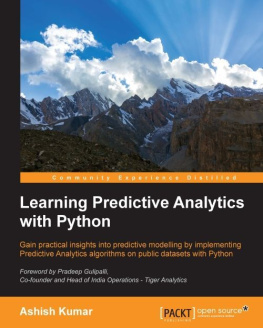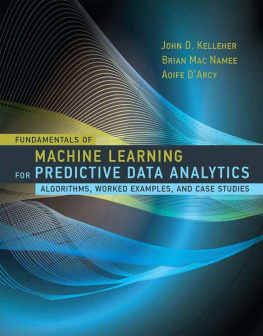
Chapter 1
Overview of Predictive Analytics
A small direct response company had developed dozens of programs in cooperation with major brands to sell books and DVDs. These affinity programs were very successful, but required considerable up-front work to develop the creative content and determine which customers, already engaged with the brand, were worth the significant marketing spend to purchase the books or DVDs on subscription. Typically, they first developed test mailings on a moderately sized sample to determine if the expected response rates were high enough to justify a larger program.
One analyst with the company identified a way to help the company become more profitable. What if one could identify the key characteristics of those who responded to the test mailing? Furthermore, what if one could generate a score for these customers and determine what minimum score would result in a high enough response rate to make the campaign profitable? The analyst discovered predictive analytics techniques that could be used for both purposes, finding key customer characteristics and using those characteristics to generate a score that could be used to determine which customers to mail.
Two decades before, the owner of a small company in Virginia had a compelling idea: Improve the accuracy and flexibility of guided munitions using optimal control. The owner and president, Roger Barron, began the process of deriving the complex mathematics behind optimal control using a technique known as variational calculus and hired a graduate student to assist him in the task. Programmers then implemented the mathematics in computer code so they could simulate thousands of scenarios. For each trajectory, the variational calculus minimized the miss distance while maximizing speed at impact as well as the angle of impact.
The variational calculus algorithm succeeded in identifying the optimal sequence of commands: how much the fins (control surfaces) needed to change the path of the munition to follow the optimal path to the target. The concept worked in simulation in the thousands of optimal trajectories that were run. Moreover, the mathematics worked on several munitions, one of which was the MK82 glide bomb, fitted (in simulation) with an inertial guidance unit to control the fins: an early smart-bomb.
There was a problem, however. The variational calculus was so computationally complex that the small computers on-board could not solve the problem in real time. But what if one could estimate the optimal guidance commands at any time during the flight from observable characteristics of the flight? After all, the guidance unit can compute where the bomb is in space, how fast it is going, and the distance of the target that was programmed into the unit when it was launched. If the estimates of the optimum guidance commands were close enough to the actual optimal path, it would be near optimal and still succeed. Predictive models were built to do exactly this. The system was called Optimal Path - to - Go guidance.
These two programs designed by two different companies seemingly could not be more different. One program knows characteristics of people, such as demographics and their level of engagement with a brand, and tries to predict a human decision. The second program knows locations of a bomb in space and tries to predict the best physical action for it to hit a target.
But they share something in common: They both need to estimate values that are unknown but tremendously useful. For the affinity programs, the models estimate whether or not an individual will respond to a campaign, and for the guidance program, the models estimate the best guidance command. In this sense, these two programs are very similar because they both involve predicting a value or values that are known historically, but are unknown at the time a decision is needed. Not only are these programs related in this sense, but they are far from unique; there are countless decisions businesses and government agencies make every day that can be improved by using historic data as an aid to making decisions or even to automate the decisions themselves.
This book describes the back-story behind how analysts build the predictive models like the ones described in these two programs. There is science behind much of what predictive modelers do, yet there is also plenty of art, where no theory can inform us as to the best action, but experience provides principles by which tradeoffs can be made as solutions are found. Without the art, the science would only be able to solve a small subset of problems we face. Without the science, we would be like a plane without a rudder or a kite without a tail, moving at a rapid pace without any control, unable to achieve our objectives.
What Is Analytics?
Analytics is the process of using computational methods to discover and report influential patterns in data. The goal of analytics is to gain insight and often to affect decisions. Data is necessarily a measure of historic information so, by definition, analytics examines historic data. The term itself rose to prominence in 2005, in large part due to the introduction of Google Analytics. Nevertheless, the ideas behind analytics are not new at all but have been represented by different terms throughout the decades, including cybernetics, data analysis, neural networks, pattern recognition, statistics, knowledge discovery, data mining, and now even data science.
The rise of analytics in recent years is pragmatic: As organizations collect more data and begin to summarize it, there is a natural progression toward using the data to improve estimates, forecasts, decisions, and ultimately, efficiency.
What Is Predictive Analytics?
Predictive analytics is the process of discovering interesting and meaningful patterns in data. It draws from several related disciplines, some of which have been used to discover patterns in data for more than 100 years, including pattern recognition, statistics, machine learning, artificial intelligence, and data mining. What differentiates predictive analytics from other types of analytics?
First, predictive analytics is data-driven, meaning that algorithms derive key characteristic of the models from the data itself rather than from assumptions made by the analyst. Put another way, data-driven algorithms induce models from the data. The induction process can include identification of variables to be included in the model, parameters that define the model, weights or coefficients in the model, or model complexity.
Second, predictive analytics algorithms automate the process of finding the patterns from the data. Powerful induction algorithms not only discover coefficients or weights for the models, but also the very form of the models. Decision trees algorithms, for example, learn which of the candidate inputs best predict a target variable in addition to identifying which values of the variables to use in building predictions. Other algorithms can be modified to perform searches, using exhaustive or greedy searches to find the best set of inputs and model parameters. If the variable helps reduce model error, the variable is included in the model. Otherwise, if the variable does not help to reduce model error, it is eliminated.
Another automation task available in many software packages and algorithms automates the process of transforming input variables so that they can be used effectively in the predictive models. For example, if there are a hundred variables that are candidate inputs to models that can be or should be transformed to remove skew, you can do this with some predictive analytics software in a single step rather than programming all one hundred transformations one at a time.
Next page


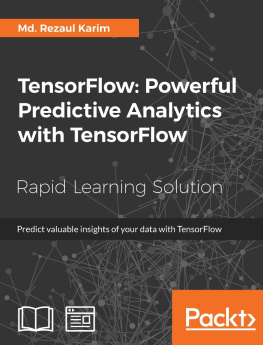
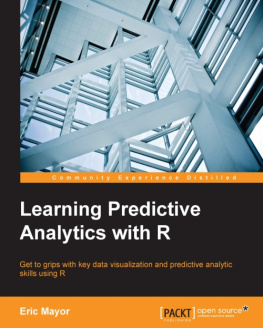
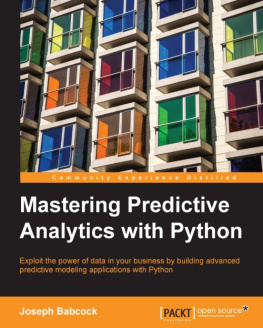
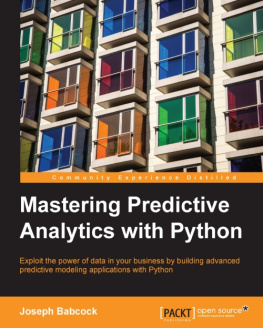
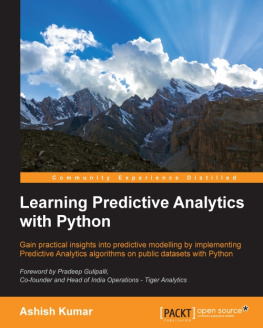
![Thomas W. Miller [Thomas W. Miller] - Web and Network Data Science: Modeling Techniques in Predictive Analytics](/uploads/posts/book/119619/thumbs/thomas-w-miller-thomas-w-miller-web-and.jpg)
![Thomas W. Miller [Thomas W. Miller] - Marketing Data Science: Modeling Techniques in Predictive Analytics with R and Python](/uploads/posts/book/119596/thumbs/thomas-w-miller-thomas-w-miller-marketing.jpg)
